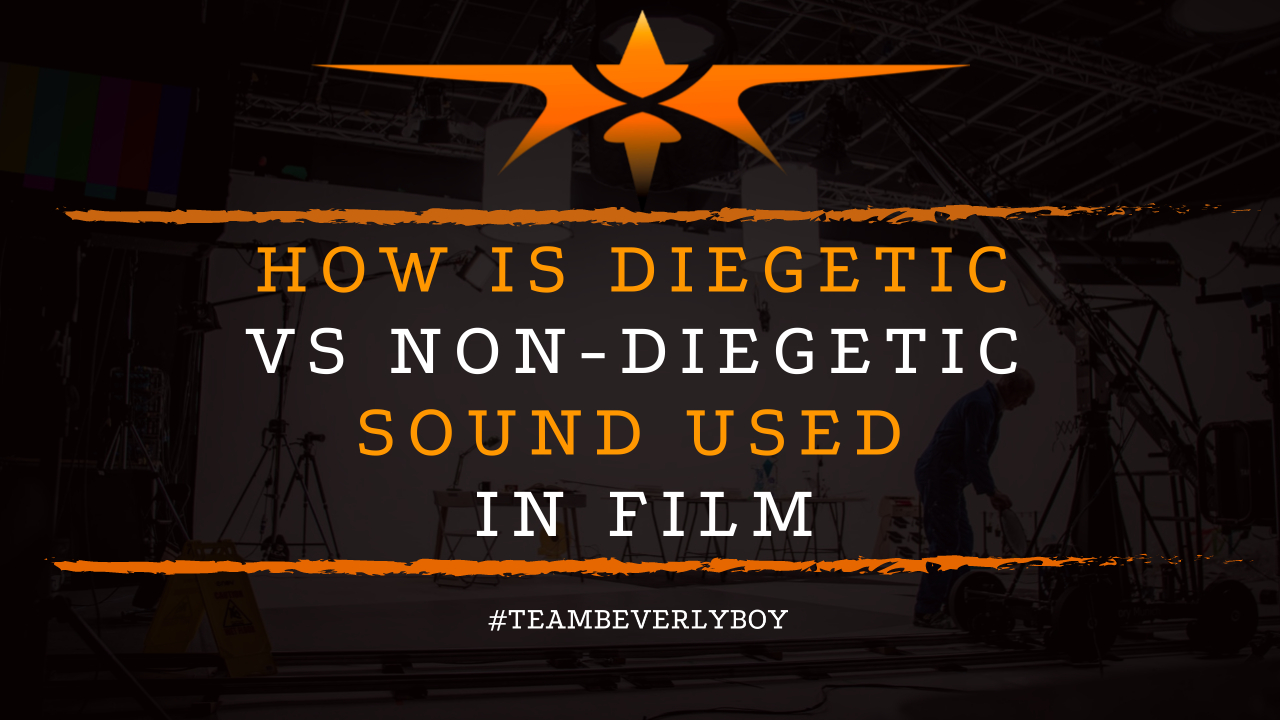
How is Diegetic vs Non-Diegetic Sound Used in Film
The use of diegetic sound and non-diegetic sound in film frequently comes up during production. Filmmakers use diegetic vs. non-diegetic sound in film in many different ways. Far beyond what you might be familiar with. As we look at the progression of sound layering in films. And how dynamic sound has become in building audience connections and realism within the stories that filmmakers share. We’ll also examine the differences between diegetic vs non-diegetic and its role in film.

What are Diegetic Sounds in Film?
Productions that capture diegetic sounds frequently face several challenges, why? Because diegetic sounds are those which are naturally occurring during the shoot.
These sounds include both sounds that the filmmaker wants to capture. Such as the dialogue and sounds that characters make during the shoot. As well as sounds that the filmmaker really doesn’t want captured such as unwanted noise.
Diegetic sounds include:
- Character dialogue.
- Environmental sounds such as an air conditioner, airplane, or bird chirping in the background.
- Sounds made by actions taking place on the set such as the sound of a chair falling or some other object moving.
- Music and sounds that were played during the shoot to resemble that which was coming from the “World” that was created for the film.
Traditional Methods
Diegetic sounds are captured through the traditional methods of film production. Boom mics, audio recorders and other forms of equipment are often used to record the diegetic sounds in film.
What are Non-Diegetic Sounds in Film?
In addition to diegetic sounds being used in film, non-diegetic sounds are also important. Non-diegetic sound will come from things like outside narration. Or the sound effects created for your film.
These sounds are not so much “realistic” as they are created. And they come from outside the “world” you have created from which your scenes are playing out.
Other non-diegetic sounds in film are those which add commentary. Or otherwise heighten the audience experience. For example, soundtrack music that plays as part of the film. But which is not coming from within the “world” or “scene” that is being filmed, is non-diegetic sound.
Diegetic vs. Non-Diegetic Sound in Film
To help you understand diegetic vs non-diegetic sounds it makes sense to compare them. Diegetic sounds are those which are expected from the world, such as character dialogue or conversations your characters have and music that is occurring within the world.
Non-diegetic sound is not “part” of your world, so for example you have a character having a conversation, which is diegetic and then you might have a narrator addressing what just happened, which is non-diegetic.
Most of the time, (not always), diegetic sound is filmed during the shoot and non diegetic sound is done outside of the traditional production process.
So, another way to view the way diegetic vs. non-diegetic sound in film is used, is to examine how it was incorporated into the film. One being more so during production, the other during post-production.


